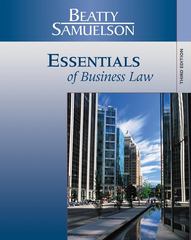Question
There are two sellers who compete by choosing quantity (Cournot). The inverse demand is P = 120 Q. Each firm's cost is 30Q. There are
There are two sellers who compete by choosing quantity (Cournot). The inverse demand is P = 120 Q. Each firm's cost is 30Q. There are no fixed costs. In this market firms decide how much to produce and then price is determined by the market (think of fishing boats, for example).
(a) Suppose that Firm 2 produces 30. Then the inverse demand facing Firm 1 is P = 120 30 Q1 = 90 Q1. This implies that Firm 1's marginal revenue is 902Q1. How much will Firm 1 produce to maximize its profits?
(b) Suppose that Firm 1 produces 30. Then the inverse demand facing Firm 2 is P = 120 30 Q2 = 90 Q2. This implies that Firm 2's marginal revenue is 902Q2. How much will Firm 2 produce to maximize its profits?
(c) If both firms produce 30, what are both firms' profits?
(d) Suppose the buyers in this market proposed that the firms compete in a price game rather than a quantity game. For example, they might suggest that sellers compete in a price auction before production takes place. The winner of that auction would get the whole market and meet demand at that price. If you were one of the two firms, would you be better off or worse off in a price game? Explain.
Step by Step Solution
There are 3 Steps involved in it
Step: 1

Get Instant Access to Expert-Tailored Solutions
See step-by-step solutions with expert insights and AI powered tools for academic success
Step: 2

Step: 3

Ace Your Homework with AI
Get the answers you need in no time with our AI-driven, step-by-step assistance
Get Started


